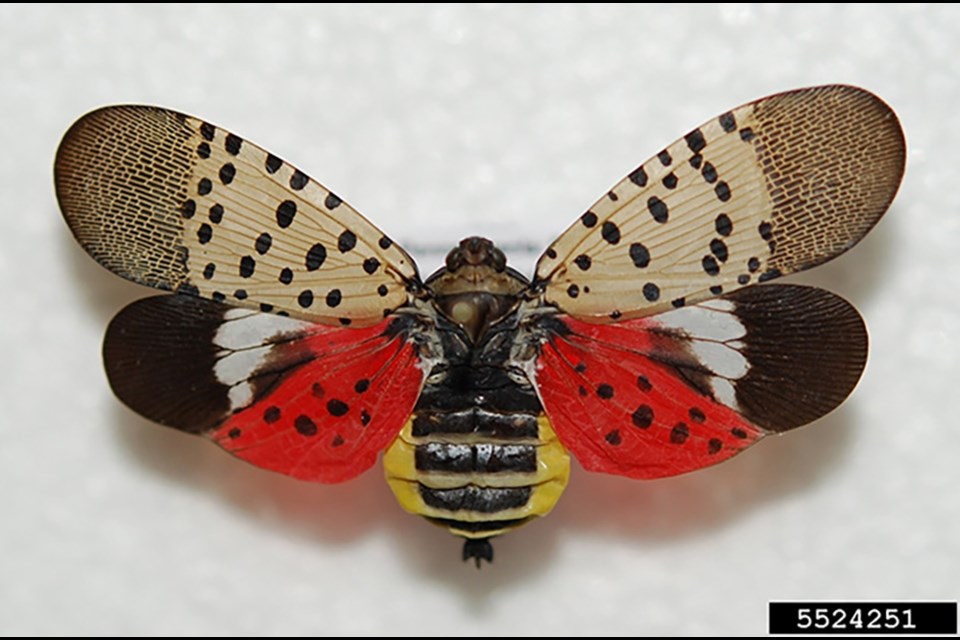The emerald ash borer is decimating ash trees across North America. Efforts are ongoing to curb the spread of the Asian long-horned beetle.
Now there’s a new threat, another invasive species from Southeast Asia: the spotted lanternfly.
Spotted lanternfly (Lycorma delicatula) is, frankly, beautiful. The insect resembles a butterfly or moth when mature; when it spreads its wings, a bold colour scheme of black, white and red is revealed.
But it’s not a moth or even a fly. It’s a planthopper, like an aphid.
Spotted lanternfly arrived in North America some time before 2014, when they were first spotted in Pennsylvania. Biologists theorize that an egg mass attached to a pallet was brought in from Asia and hatched.
Like all aphids, Spotted lanternfly feeds on sap. Unlike the Emerald ash borer, thought, they aren’t specific to one type of host. They prefer walnut, grape vines, and the Asian tree species Ailanthus (Tree of Heaven) – which has been planted heavily in some urban environments because of its resistance to pollution.
But they will feed on any hardwood, including fruit trees and ornamentals. They’ll even feed on pine and oak trees.
If the infestation is large enough, spotted lanternfly can seriously weaken or even kill a tree. Its ‘honeydew’ – the secretions after feeding – attract other insects, and encourage the growth of mold.
The invasive insect has now been found in New Jersey, northern Delaware, New York and northern Virginia – but not yet in Canada.
That’s one reason why foresters with the County of Simcoe and Lake Simcoe Region Conservation Authority referred questions to the Canadian Food Inspection Agency (CFIA).
Due to the threat posed to horticulture, the wine industry and tender fruit crops, Spotted Lanternfly is a federally-regulated pest species.
The CFIA has created a series of Plant Pest Cards to help foresters and homeowners recognize damaging invasive species, from Asian Gypsy Moth and Blueberry maggot, to the Spotted Lanternfly. Other online resources include an Exotic Forest Insect Guidebook, and Plant Pest Fact Sheets.
August is ‘Tree Check Month,’ urging all residents to check the woods and trees around them for invasive species – insects, diseases and fungi.
“In recent years, Canadians have discovered some of the largest invasive threats to Canada,” the CFIA website notes – including the hemlock wooly adelgid, Asian long-horned beetle and Emerald ash borer. The sightings have allowed CFIA teams to respond to the threats, sometimes before the pests can spread.
For more information on Spotted lanternfly and other invasive pests, see [email protected].
Spotted lanternfly is the latest invasive species, introduced as a result of International trade and shipping of goods without taking precautions to prevent diseases and pests from spreading.
Other threats looming on the horizon include Thousand cankers disease – an invasive fungus that attacks black walnut; Sudden Oak Death, so far localized on the west coast; and Oak Wilt – a fungal pathogen widespread in the northeastern United States but not yet in Canada.



